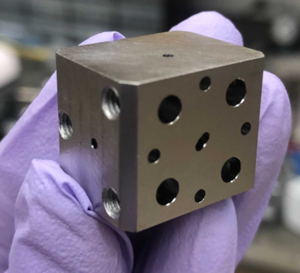Researchers have discovered a new way to “translate” quantum information between different kinds of quantum technologies. The technology transfers quantum information to a higher-frequency photon called an optical photon, which is more resilient to ambient noise than microwave photons. Rubidium atoms are used to act as intermediary matter to transfer the quantum information. By using lasers to shift the atom’s electron energies up and down, the technology allows the atom to absorb a microwave photon with quantum information and then emit an optical photon with that quantum information. Progress in manipulating such small objects has made the technology possible, and the interaction between the photon and whatever matter is placed inside is strengthened by cavity quantum electrodynamics, where a photon is trapped in a superconducting, reflective chamber. This technology could have significant implications for quantum computing, communication, and networking, and may serve as a fundamental building block for a quantum internet.
Researchers have made a breakthrough discovery by finding a new way to convert quantum information between different kinds of quantum technologies. This new process could have significant implications for quantum computing, communication, and networking. The research was recently published in the prestigious journal Nature and was funded by the Army Research Office, the Air Force Office of Scientific Research, and the NSF Quantum Leap Challenge Institute for Hybrid Quantum Architectures and Networks.
Quantum information technologies rely heavily on photons, which are particles of light. Different technologies use these photons at different frequencies, which can be a challenge when building a quantum network or connecting quantum computers. For example, superconducting qubits, such as those used by tech giants Google and IBM, store quantum information in photons that move at microwave frequencies. However, these microwave photons cannot be sent around for quantum communication because their grip on their quantum information is too weak to survive the trip.
To solve this problem, the researchers transferred the quantum information to a higher-frequency photon called an optical photon, which is more resilient to ambient noise. However, direct transfer from photon to photon is not possible; intermediary matter is required. Kumar’s experiment aimed to use atoms instead of solid state devices to act as the intermediary matter.
The discovery of this new process is a significant step towards building a quantum internet. It represents a new way to convert quantum information from the format used by quantum computers to the format needed for quantum communication. The experiment provides hope for the future of quantum communication, as it is now possible to transfer quantum information between different kinds of quantum technologies.
The future of quantum computing, communication, and networking may be revolutionized by a breakthrough discovery from researchers who have found a way to convert quantum information between different kinds of quantum technologies. In a recent article in Nature, scientists described their innovative approach to transfer quantum information from the format used by quantum computers to the format needed for quantum communication.
The technology uses atoms to act as intermediary matter to transfer the quantum information to a higher-frequency photon called an optical photon, which is more resilient to ambient noise than microwave photons. By using lasers to shift the atom’s electron energies up and down, the technology allows the atom to absorb a microwave photon with quantum information and then emit an optical photon with that quantum information, known as “transduction.” This breakthrough has significant implications for quantum computing, communication, and networking.
Rubidium atoms have two gaps in their levels that Kumar’s technology exploits, one of which equals the energy of a microwave photon, and one that equals the energy of an optical photon. The researchers used lasers to control the electrons’ energies, allowing for efficient control of the atoms. Progress in manipulating such small objects has made the technology possible, and the interaction between the photon and whatever matter is placed inside is strengthened by cavity quantum electrodynamics, where a photon is trapped in a superconducting, reflective chamber.
The technology can transfer quantum information from microwave photons to optical photons and vice versa. It can serve as a fundamental building block for a quantum internet and can be on either side of a long-distance connection between two superconducting qubit quantum computers.
The technology’s core ability is to strongly entangle atoms and photons, an essential, and difficult task in many different quantum technologies across the field. The platform can generate efficient entanglement, which is essential in almost everything quantum, from computing to simulations to metrology and atomic clocks.
This breakthrough discovery represents a significant step towards building a quantum internet, and there may be many more applications for this technology beyond quantum networking. As the field progresses, researchers are excited to see what else they can do.
The accuracy of news releases posted to EurekAlert! by contributing institutions is not the responsibility of AAAS or EurekAlert!. Users are responsible for using the information provided by the EurekAlert system.
Don’t miss interesting posts on Famousbio










